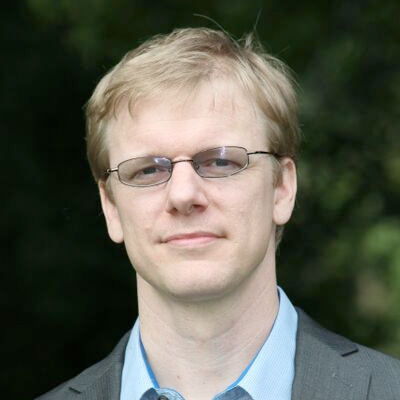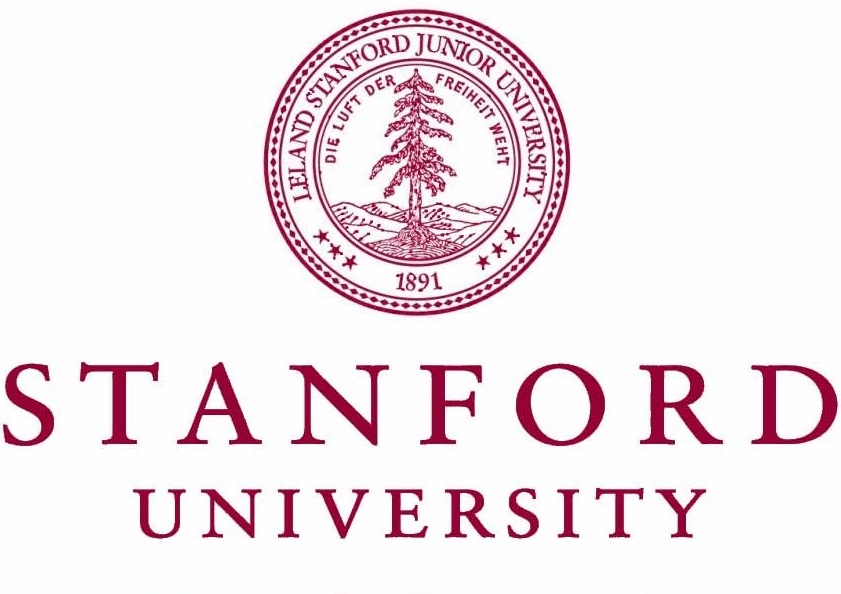Computing virtual sounds automatically
Natural and physical sounds are all around us: a piece of paper rubbing against the table or a glass of water being poured, the distant sound of a lawn mower or a jet plane tearing through the sky. Sound provides important auditory cues for perceiving and understanding our environment, the motions and interactions of objects, and their physical compositions. Dr. Doug James, Professor of Computer Science at Stanford University, develops computer simulations that can synthesize realistic sounds with complex physics-based animations such as splashing fluids or fracturing solids. Despite the importance of sound, most sounds generated in computer graphics and virtual environments unfortunately lack synchronization and predictive realism, and are usually pre-recorded “canned sounds” that do not match the underlying physical process. To this end, Dr. James hopes to make fundamental advances in physics-based audiovisual simulation so that humans can both see and hear simulated virtual models.
While realistic computer-animated imagery has revolutionized engineering insight and practice, the lack of realistic auditory feedback is a major impediment to the serious use of virtual reality for scientific and engineering applications. By enabling computer-simulated physical objects to make sound in virtual environments, Dr. James and his team will be able to synthesize sound and imagery all at once and improve the creative process in many areas, including architectural design and development, virtual prototyping in engineering design, models for acoustic remote sensing, and computational robotics. For example, we hope to devise methods which can improve future robots’ perceptual models of sound around them, to build computational models of mechanical processes that can estimate and reduce the noise of industrial machinery, to support more realistic training in immersive virtual environments, and to provide future animation directors with immediate auditory feedback instead of waiting for sound post-production.
Current projects include:
- Water: Dr. James and his team hope to compute highly realistic visual and auditory renderings of water. Currently, there are no methods for computing rich all-frequency sounds due to acoustic bubbles of widely varying shapes and sizes, from millimeter to decimeter scale, e.g., such as when a wave breaks on the shore. By properly resolving multi-scale bubbles and their associated vibrations and radiation, Dr. James plans to develop sound-enabled simulations of water (and other liquids) that can deliver rich multi-sensory experiences.
- Many-body Contact Sounds: Many current sound models for rigid bodies are fast but deficient in several ways. They are unable to reproduce typical contact sounds in laboratory experiments, such as the chattering produced by a spoon dropped into a cereal bowl, let alone be able to compute validated sound for animated mechanisms such as a robot or a whirring mechanical assembly. Dr. James hopes to develop parallel algorithms to efficiently resolve complex contact events, chattering, and inter-object coupling effects. In addition, many-body sound radiation is important for complex many-part assemblies, and must be addressed to capture the proper shadowing, scattering and diffraction effects which make many-body systems, such as a mechanical assembly, sound the way they do.
- Destructive Processes (i.e. Fracture): In the first physics-based sound model for brittle fracture, Dr. James showed how to synthesize familiar sounds of breaking wine glasses and piggy banks. However, significant challenges remain for synthesizing sounds of virtual destruction. For example, large deformation and plastic phenomena, such as twisted metal during a car crash or tearing paper, require improved time-domain methods to avoid the limitations of modal sound models, and high space-time costs of brute-force time-stepping approaches. Furthermore, simulating sound for objects very large relative to sound wavelengths, such as a collapsing architectural structure or calving glacier, are particularly difficult due to challenges of mid-frequency acoustics and vibration analysis. Dr. James considers practical methods to render these problems.

Bio
Dr. Doug L. James is a Full Professor of Computer Science at Stanford University (since June 2015), and was previously an Associate Professor of Computer Science at Cornell University (2006-2015). He holds three degrees in applied mathematics, including a Ph.D. in 2001 from the University of British Columbia. In 2002, he joined the School of Computer Science at Carnegie Mellon University as an Assistant Professor, before joining Cornell in 2006.
Dr. James’ research interests include computer graphics, computer sound, physically based modeling and animation, and reduced-order physics models. Dr. James is a recipient of a National Science Foundation CAREER award, and a fellow of both the Alfred P. Sloan Foundation and the Guggenheim Foundation. He received a 2012 Technical Achievement Award from The Academy of Motion Picture Arts and Sciences for “Wavelet Turbulence,” and the 2013 Katayanagi Emerging Leadership Prize from Carnegie Mellon University and Tokyo University of Technology. He was the Technical Papers Program Chair of ACM SIGGRAPH 2015.
Dr. James is fascinated by our natural world, and the design of efficient computer methods for simulating it. His thirst for understanding the physical world led him to study mathematics and physics, and his desire to simulate it led him to study numerical computing and computer graphics. His overarching goal is to enable the efficient simulation of new multi-sensory experiences, primarily by developing computer methods that are both faster and better than their predecessors, and by focussing on graphical and auditory applications.
For more information, visit https://profiles.stanford.edu/doug-james
Project Webpages
- Sound Rendering for Physically Based Simulation: http://www.cs.cornell.edu/projects/Sound
- Fracture Sound: http://www.cs.cornell.edu/projects/FractureSound
- Acceleration Noise: http://www.cs.cornell.edu/projects/Sound/impact
- Harmonic Shells: http://www.cs.cornell.edu/projects/HarmonicShells
- Harmonic Fluids: http://www.cs.cornell.edu/projects/HarmonicFluids

In the News
BBC Radio, Click, Oct 2012
NPR Radio, 2011
New Scientist, 2009
Cornell Chronicle, 2010
phys.org, 2012
National Science Foundation: Discoveries, 2013
Publications
Videos
Awards
Katayanagi Emerging Leadership Prize, 2013
Carnegie Mellon University and Tokyo University of Technology
Technical Achievement Award for Wavelet Turbulence (Theodore Kim, Nils Thuerey, Doug James, Markus Gross), 2013
The Academy of Motion Picture Arts and Sciences
Research Fellow, 2011
John Simon Guggenheim Memorial Foundation
Research Fellow, 2006
Alfred P. Sloan Foundation
NSF CAREER Award, 2004-2009
National Science Foundation. “Precomputing Data-driven Deformable Systems for Multimodal Interactive Simulation.”


